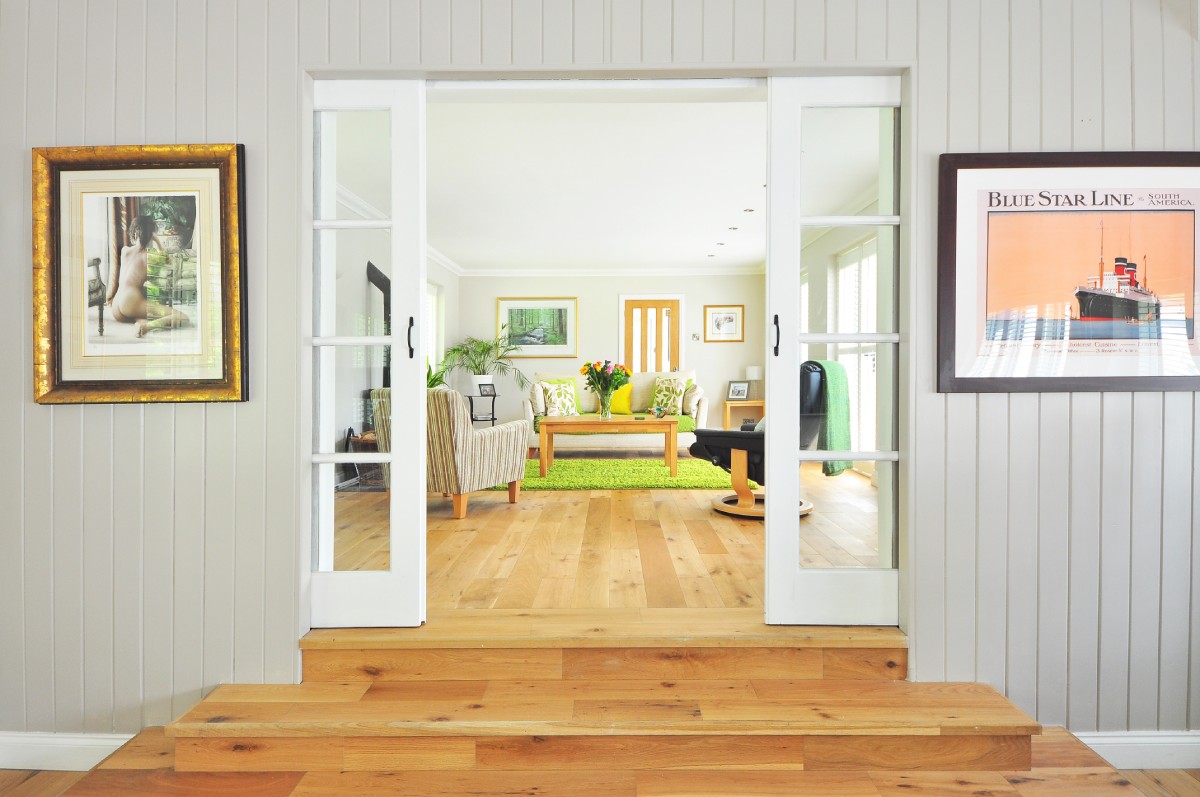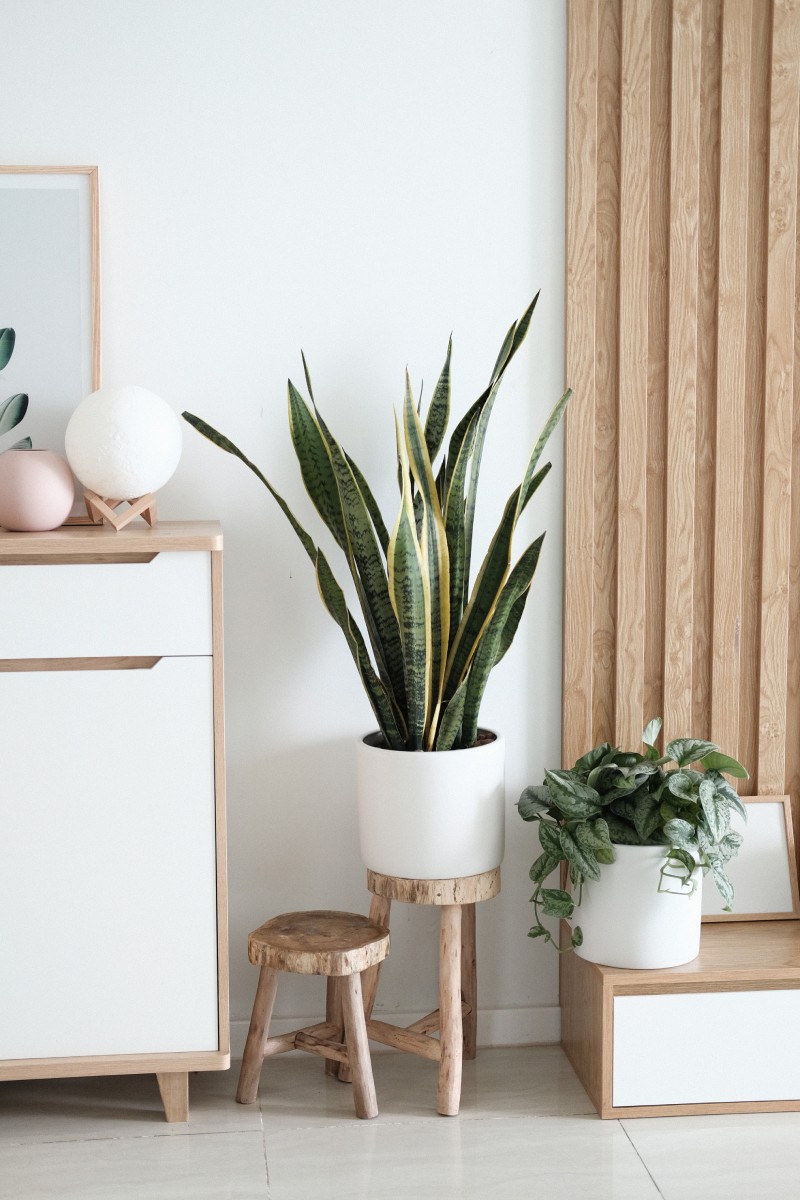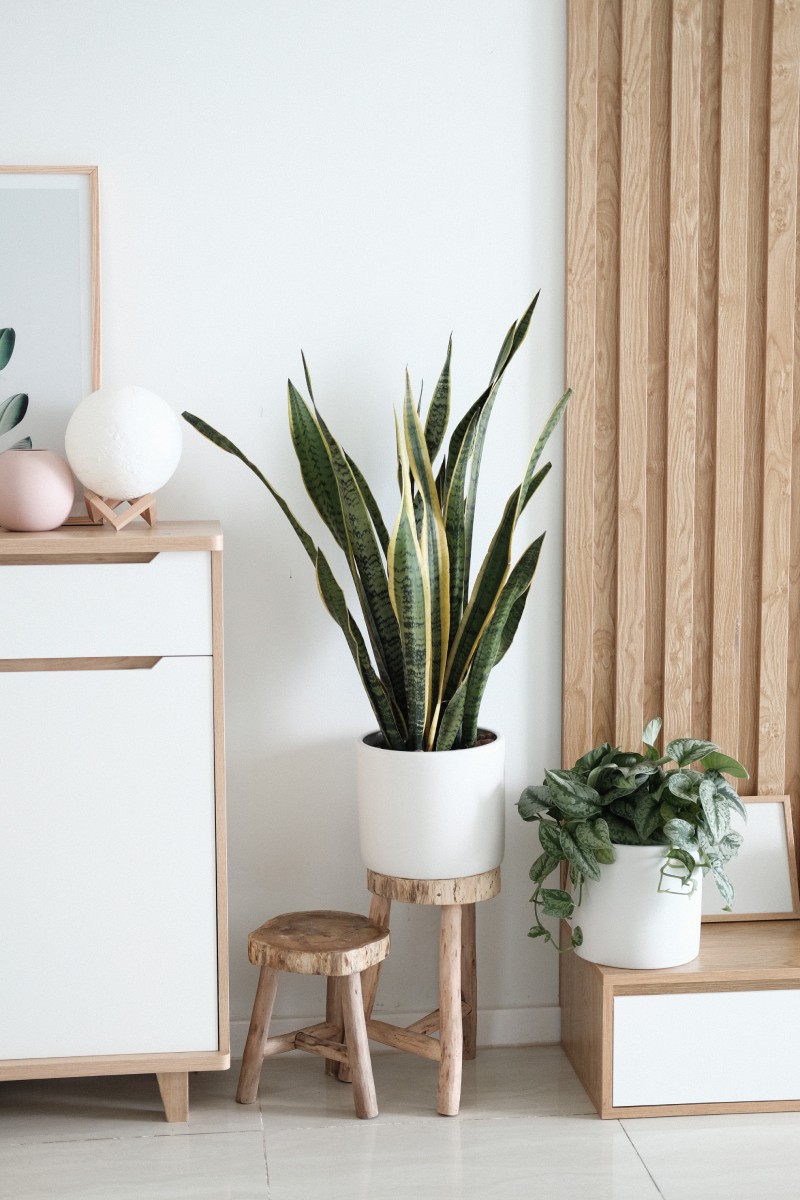Introduction
In the modern era, where our ecological footprint deepens with every passing day, there’s an ever-increasing need to recalibrate our lifestyles. Amid this backdrop, the concept of “low impact living” emerges as a beacon of hope - a guiding principle that allows us to tread lightly on the planet while living fully. By making conscious choices in our daily habits and the spaces we inhabit, we pave the way for a sustainable legacy. In this room-by-room guide, we’ll walk you through tangible steps to ensure every corner of your home mirrors the ethos of low impact living. Whether you’re peeling potatoes in the kitchen or pulling back curtains in the bedroom, there are myriad opportunities to inculcate sustainability.
Understanding low impact living
At its core, low impact living is about minimizing harm to the environment while maximizing holistic well-being. It’s not just about the big, conspicuous acts like installing solar panels or purchasing electric vehicles. More often, it’s about the nuanced, everyday decisions - the products we use, the waste we generate, the energy we consume.
A Holistic Approach
Low impact living urges us to consider the entire lifecycle of our actions: from resource extraction to production, usage, and eventual disposal. In doing so, it offers a holistic approach, making us more mindful consumers and fostering a harmonious relationship with the Earth.
Importance of each room in sustainable living
Each room in our homes holds specific functions, and as a result, unique challenges and opportunities when it comes to sustainability.
-
Living Room: A space of relaxation and entertainment, it beckons for energy-saving fixtures, eco-friendly furnishings, and mindful consumption.
-
Kitchen: As the heart of many homes, kitchens witness a flurry of activities, from cooking to dining. Here lies the potential for sustainable food practices, waste reduction, and energy-efficient appliances.
-
Bedroom: As a sanctuary of rest, bedrooms are ripe for organic bedding, optimized natural lighting, and clean, toxin-free air.
-
Bathroom: Daily rituals in bathrooms translate to significant water and product usage, offering avenues for conservation and eco-friendly alternatives.
-
Home Office: Where green tech meets productivity.
-
Garage: A space that can champion sustainable transportation and storage.
-
Garden: Nature’s canvas for promoting biodiversity and sustainable gardening.
-
Laundry Room: A utility area with potential for sustainable laundry practices and waste management.
By addressing the specific needs and characteristics of each room, we weave sustainability seamlessly into the fabric of our daily lives.
Crafting a Sustainable Tapestry
When each room reflects the principles of low impact living, they collectively craft a tapestry of sustainability - a home where every square foot resonates with conscious living.
Overview of the article content
In this comprehensive guide, we’ll embark on a journey through every room of your home. From the bustling energy of kitchens to the tranquil vibes of bedrooms, we’ll delve deep into practical strategies to embed sustainability. We’ll discuss actionable tips, product recommendations, and DIY solutions tailored to each space.
A Blueprint for Action
Consider this guide as a blueprint - a detailed plan that equips you with the tools and insights to reconstruct your living spaces. We won’t just skim the surface; we’ll dive into the nitty-gritty, ensuring that every nook and cranny of your home gets a sustainable makeover.
In essence, as you flip through the pages of this guide, you’ll uncover the transformative potential of each room. By the end, you’ll be equipped to make changes that not only benefit the environment but also elevate the quality of your life. Let’s embark on this enlightening journey together, crafting homes that are harmonious havens for both us and the planet.
The Living Room
The living room is often the epicenter of our homes - a space where families gather, stories unfold, and memories are made. While it’s a haven of comfort and connection, it’s also rife with opportunities to implement sustainable practices. The good news is, a low impact living room doesn’t demand radical changes. With a few tweaks and conscious choices, you can create an eco-friendly space that’s both stylish and functional.

Energy-efficient lighting options
Lighting plays a pivotal role in setting the ambiance of your living room. Yet, it’s also a significant energy consumer. Transitioning to energy-efficient lighting can dramatically reduce your energy consumption while ensuring the room is luminous.
LED Bulbs: A Bright Idea
Consider replacing traditional incandescent bulbs with LED bulbs. Not only do they consume a fraction of the energy, but they also last longer, which means fewer replacements and less waste. LEDs offer a diverse range of colors and brightness levels, allowing you to customize the mood of your space.
Natural Light Maximization
Harness the power of the sun by optimizing natural light. Rearrange your furniture to allow unobstructed sunlight, use light-colored curtains, or even add mirrors to reflect and amplify daylight. This not only cuts down on daytime lighting needs but also helps regulate indoor temperature.
Tips for reducing energy use from electronics
Electronics, from your television to your gaming console, can stealthily eat up energy, especially when left on standby.
Unplug and Switch Off
Develop a habit of turning off electronics when not in use. Unplugging devices or using a power strip can prevent energy drain from gadgets that continue to draw power even when switched off.
Smart Power Strips: A Game Changer
Consider investing in smart power strips. These devices can detect when a device is in standby mode and cut off power, preventing phantom energy usage.
Choosing sustainable furniture and décor
Your choice of furniture and décor not only defines the aesthetic of your living room but also its environmental footprint.
Opt for Ethical and Sustainable Materials
When shopping for new furniture, look for pieces made from sustainable, certified woods or recycled materials. Brands that adhere to ethical manufacturing practices or use non-toxic finishes add an additional layer of eco-friendliness.
Vintage and Second-hand: Old is Gold
Embrace the charm of vintage or second-hand furniture. These pieces come with history, character, and the benefit of reducing demand for new products. Refurbishing old furniture can also breathe new life into them, merging sustainability with style.
Decorate with Nature
Incorporate houseplants into your décor. They purify the air, add a touch of green, and can enhance the overall well-being of the room’s occupants. From low-maintenance succulents to lush ferns, there’s a plant for every living room.
In conclusion, the living room, with its myriad of functionalities, offers ample avenues to infuse sustainability. By making thoughtful choices in lighting, electronics, and furnishings, you not only craft a space that’s eco-friendly but also one that resonates with warmth and mindfulness. As you settle down on your sustainable couch, under the soft glow of an LED bulb, watching a movie on an energy-efficient TV, you’ll revel in the comfort of a room that treads lightly on the planet.
The Kitchen
The kitchen, often dubbed the heart of the home, is where nourishment takes center stage. From sizzling pans to the hum of refrigerators, this bustling space is a hub of activities and, unfortunately, potential wastage. However, with intentional practices and choices, you can transform your kitchen into a realm of sustainability, ensuring that the meals you craft are not just delicious but also kind to our planet.

Sustainable cooking and eating habits
What you eat and how you prepare it can significantly influence your environmental footprint.
Embrace Plant-Based Options
Incorporate more plant-based meals into your diet. Producing plant foods often requires less land, water, and resources than animal-based foods. This isn’t about going full vegan, but even small shifts, like a meatless Monday, can make a difference.
Source Locally and Seasonally
Support your local farmers and reduce carbon emissions linked with long-distance food transportation. Buying seasonal produce not only ensures fresher ingredients but also promotes biodiversity.
Efficient use of appliances
Your kitchen appliances, while essential, can be considerable energy guzzlers. Using them efficiently can lead to both energy and cost savings.
Refrigerator Wisdom
Keep your fridge and freezer well-stocked, but not overloaded. A full fridge retains cold better than an empty one, but overfilling can restrict airflow, making the appliance work harder. Regularly defrosting and ensuring the door seals are tight also aids in efficiency.
Stove and Oven Savvy
When cooking on a stove, match the pot size to the burner to maximize heat use. With ovens, consider batch baking or using a toaster oven for smaller dishes to conserve energy.
Waste reduction and composting
The kitchen, unfortunately, can be a major source of waste. But with conscious efforts, you can significantly reduce this.
Zero-Waste Goals
Adopt a zero-waste mindset. Invest in reusable containers for storage, choose products with minimal packaging, and buy in bulk when possible. This not only cuts down on plastic waste but also saves money in the long run.
Composting is Key
Kitchen scraps, from vegetable peels to coffee grounds, are compost gold. Set up a compost bin in your backyard or use a countertop compost collector if space is limited. This not only reduces landfill waste but also gives you rich, nutritious compost for gardening.
In summary, the kitchen, with its flurry of activities, presents both challenges and opportunities for sustainability. By making informed choices - from what you eat to how you store it, and from how you cook to how you manage waste - you can ensure your kitchen activities have a positive impact. Every meal becomes a testament to sustainability, every dish a celebration of conscious living. As you sip on a sustainably brewed cup of coffee or relish a slice of locally-sourced fruit, take a moment to appreciate the ripple effect of your choices, both on your health and the health of our planet.
The Bedroom
The bedroom is a haven of relaxation and rejuvenation. It’s where dreams take flight and where you find solace after a long day. However, like any other room in the home, the choices you make in the bedroom can influence your environmental footprint. From the sheets you snuggle into to the clothes you don each morning, opportunities abound to make sustainable decisions that not only enhance your comfort but also contribute positively to the planet.

Sustainable bedding materials
Sleeping on eco-friendly bedding doesn’t just mean better dreams; it’s a conscious step towards a healthier environment.
Organic Cotton Sheets
Unlike conventional cotton, organic cotton is grown without synthetic pesticides or genetically modified organisms. It’s a breathable and soft choice for sheets, ensuring comfort alongside sustainability.
Bamboo Bedding
Bamboo is a rapidly renewable resource, and bedding made from bamboo is often lauded for its softness and moisture-wicking properties. Plus, it’s biodegradable!
Natural Latex Mattresses
Consider swapping out memory foam or spring mattresses with those made from natural latex. Derived from rubber trees, natural latex mattresses are durable, biodegradable, and free from harmful off-gassing.
Energy conservation in the bedroom
Your sanctuary can also be energy-efficient, keeping you comfortable without compromising on eco-friendliness.
Opt for LED Bulbs
LED bulbs use up to 80% less energy than traditional bulbs. They’re a bright idea for bedside lamps or overhead lighting, offering both longevity and energy savings.
Regulate Room Temperature Naturally
Instead of relying heavily on heating or cooling, use thermal curtains to insulate your bedroom or consider cross-ventilation for those summer months. A ceiling or floor fan can also circulate air more efficiently than air conditioning.
Eco-friendly closet practices
Your wardrobe holds more power than you might think. How you fill and manage it can have significant environmental ramifications.
Quality Over Quantity
Invest in timeless, quality pieces that last longer rather than fast-fashion items that might soon end up in landfills. This not only reduces waste but often ensures better craftsmanship and longevity in your clothing.
Sustainable Fabrics
Look for clothing made from sustainable materials like organic cotton, Tencel, hemp, or recycled fibers. They’re kinder to the environment and often have a softer feel against the skin.
Mindful Laundering
Wash clothes only when necessary, use cold water settings, and air dry when possible. This reduces energy usage and extends the lifespan of your garments.
In wrapping up, the bedroom, as intimate as it is, presents a spectrum of choices that can either strain or sustain the environment. By making informed decisions, from the bedding you choose to the clothes you wear, you pave the way for a room that’s not only restful but also respectful of the earth. As the night descends and you retreat to this cozy space, let the knowledge that you’re making a difference lull you into peaceful, restorative slumber. Every night, dream a little greener.
The Bathroom
A sanctuary of cleanliness and self-care, the bathroom, surprisingly, can be one of the most wasteful areas in a home. The steady flow of water, myriad personal care products, and the disposal habits we form can all leave significant environmental footprints. Yet, with conscious choices and mindful habits, it’s entirely possible to transform your bathroom into an oasis of sustainability.

Water conservation techniques
Water is one of our most precious resources. Conserving it, especially in the bathroom where its usage is high, is crucial for a sustainable lifestyle.
Low-Flow Fixtures
Investing in low-flow toilets, faucets, and showerheads can significantly reduce water consumption without compromising on the functionality.
Shorter Showers
While a long, hot shower can be tempting, reducing your shower time by even a few minutes can save gallons of water over time.
Fix Leaks
A dripping tap might seem harmless, but over time, it can waste an immense amount of water. Regularly check for and fix any leaks in your bathroom.
Eco-friendly personal care products
What you put on your body can impact the environment as much as what you put in it.
Biodegradable Products
Choose shampoos, soaps, and body washes that are biodegradable. This ensures that they break down harmlessly once they go down the drain.
Avoid Microplastics
Many personal care products contain microbeads or other microplastics which can harm aquatic ecosystems. Opt for products that use natural exfoliants like oatmeal or sugar.
Sustainable Packaging
Look for products that come in recyclable or compostable packaging, or better yet, those that offer refill options to reduce plastic waste.
Waste reduction strategies
The bathroom can be a hotspot for waste, but with a few strategies, you can minimize its impact.
Reusable Alternatives
Instead of disposable razors, use safety razors. Swap single-use cotton rounds for washable ones. These small changes can significantly reduce bathroom waste.
Minimize Single-Use Plastics
From toothbrushes to shampoo bottles, plastics dominate bathroom products. Opt for bamboo toothbrushes and consider buying personal care items in bulk to use with refillable containers.
Recycle and Compost
Ensure you’re recycling items like toilet paper rolls and shampoo bottles. If you use biodegradable products, you might even be able to compost some of your bathroom waste, like hair and nail clippings.
In conclusion, the bathroom, often overlooked as a simple utility space, holds profound potential in the journey toward low-impact living. The water you conserve, the products you choose, and the waste you reduce all contribute to a healthier planet. As you brush your teeth, wash your face, or indulge in a relaxing bath, know that every drop saved, every sustainable product chosen, and every piece of waste reduced can make a world of difference. Your bathroom rituals not only rejuvenate you but can also refresh the planet.
The Home Office
The rise of remote work has led to an increased emphasis on the home office. While this shift offers comfort and flexibility, it also brings challenges related to energy use, electronic waste, and sustainability. A green home office not only reduces your environmental impact but can also promote better productivity and a healthier workspace.

Greening your tech and electronics
Technology is indispensable in modern home offices, but it’s essential to make sustainable choices.
Opt for Energy Star Rated Equipment
When purchasing new gadgets or appliances, look for the Energy Star label. These products meet strict energy efficiency guidelines set by the U.S. Environmental Protection Agency.
E-Waste Recycling
Electronics have a finite lifespan. When they’re no longer useful, ensure they’re recycled properly to prevent harmful components from damaging the environment.
Use Multi-function Devices
Rather than having a separate printer, scanner, and fax machine, consider a multi-function device. It saves space and reduces the energy footprint.
Energy-saving practices for remote work
Energy consumption can escalate quickly in a home office, but adopting certain practices can mitigate this.
Take Advantage of Natural Light
Place your workstation near windows to make the most of daylight, reducing the need for artificial lighting.
Power Down When Not in Use
Turn off computers, printers, and other equipment when they’re not in use. Using power strips makes it easier to turn off multiple devices at once.
Optimize Computer Settings
Ensure your computer’s power settings are adjusted for energy efficiency. Utilize sleep mode and screen timeouts to conserve energy when inactive.
Sustainable office supplies
The little things matter. The supplies you choose can significantly impact the environment.
Recycled Paper Products
Whether it’s notepads or printer paper, opt for products made from recycled materials. This reduces the demand for virgin paper, helping save trees.
Refillable Stationery
Instead of discarding pens when they run out, use refillable ones. It’s a small step that can significantly reduce plastic waste over time.
Mind the Packaging
When ordering office supplies, choose companies that prioritize eco-friendly packaging. Less plastic and more recyclable or compostable materials make a difference.
To wrap it up, crafting a sustainable home office requires mindful choices and small habitual changes. It’s not just about reducing your carbon footprint; it’s also about creating a workspace that resonates with the principles of care, respect, and responsibility towards the planet. As you plug in your laptop, draft reports, or attend virtual meetings, remember that every sustainable action in your home office contributes to a larger, global impact. Embrace low-impact living, even when working from home.
The Laundry Room
The laundry room, often overlooked, plays a significant role in our household’s environmental impact. From water and energy consumption to the products we use, every laundry session can either contribute to or reduce our carbon footprint. By rethinking how we handle our laundry, we can not only ensure our clothes last longer but also take meaningful steps towards low-impact living.
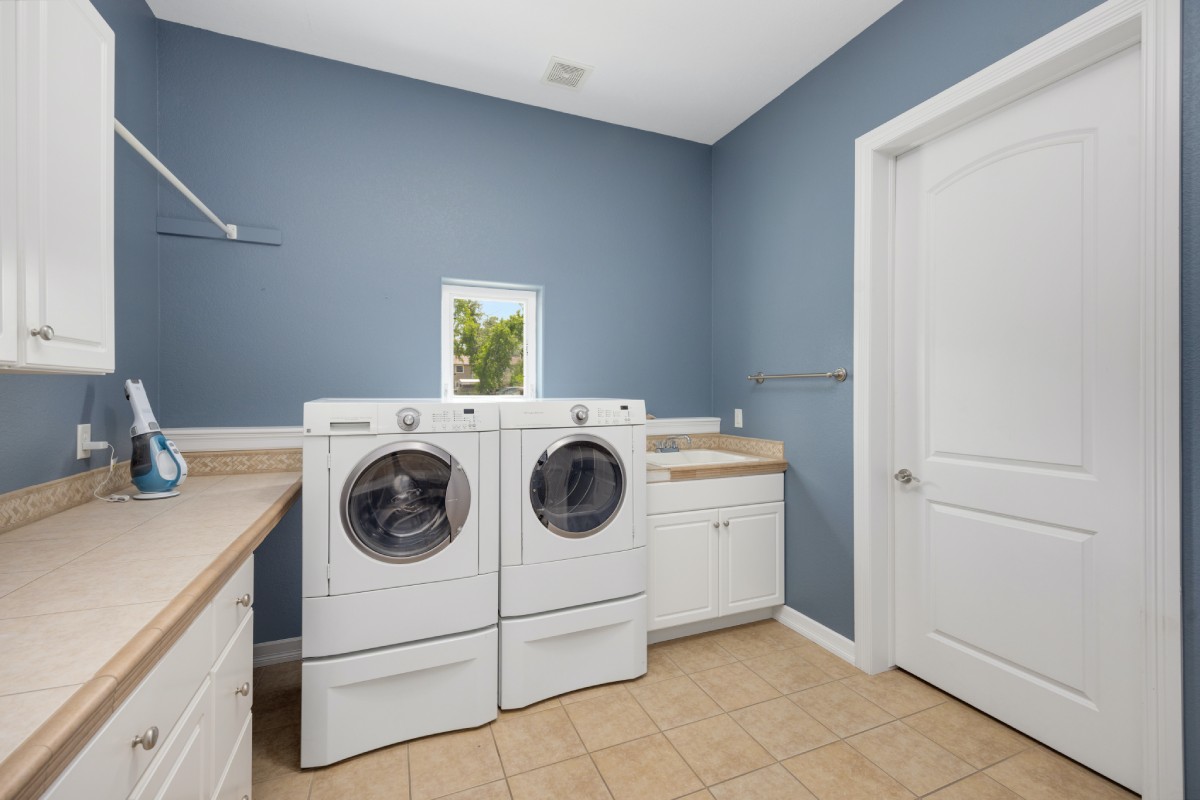
Eco-friendly laundry detergents and practices
It’s not just about what machine you use; it’s also about the products and practices you adopt.
Plant-Based Detergents
Switch to detergents derived from plants. They biodegrade faster and are less likely to harm aquatic life when they find their way into water systems.
Cold Washes are Cool
Heating water consumes energy. Opt for cold washes whenever possible. Modern detergents are effective even in cold water.
Limit the Dryer
Air drying clothes saves energy and reduces wear and tear. If you must use a dryer, ensure it’s full (but not overloaded) to maximize efficiency.
Energy conservation in laundry processes
Every wash and dry cycle consumes energy. Here’s how to minimize that consumption.
Opt for High-Efficiency Machines
If you’re in the market for a new washer or dryer, look for those labeled “High Efficiency.” They use less water and energy.
Regular Maintenance
Clean the lint filter in your dryer after every use. A clogged filter makes the machine work harder, consuming more energy.
Wash Full Loads
A full machine (without overloading) is more efficient than running two smaller loads. It conserves both water and energy.
Recycling and waste management
Laundry rooms can generate waste, from detergent bottles to damaged clothing. Here’s how to manage it sustainably.
Detergent Packaging
Opt for laundry detergents that come in recyclable or refillable packaging. Some brands even offer bulk buying options.
Repurpose Old Clothes
Before discarding worn-out clothes, think of ways to repurpose them. They can become cleaning rags, craft materials, or be used for patches.
Use a Microfiber Filter
Tiny microfibers shed from our clothes during washing. By installing a microfiber filter in your washing machine, you prevent these fibers from entering water systems and eventually the oceans.
In essence, a sustainable laundry room is within easy reach, requiring just a few tweaks to your routine and choices. Adopting eco-friendly habits in this space not only reduces your environmental impact but also often results in cleaner, fresher, and longer-lasting clothes. The next time you load your washer, consider the broader impact of your choices and remember that every drop of water and ounce of energy saved makes a difference.
The Garden
A well-maintained garden can be the green heart of a home, both in color and in eco-consciousness. Beyond the beauty and tranquility a garden offers, it holds the potential to become a bastion of sustainability. By introducing mindful practices into your garden, you not only promote a healthier environment but also forge a stronger connection with the natural world.

Sustainable gardening practices
Gardening sustainably goes beyond just planting trees or flowers; it’s about creating an environment where every element plays a part in a larger eco-system.
Native Plants are Key
Introduce native plants into your garden. They are adapted to your local climate and soil, which means they require less water and care. Plus, they provide familiar habitats for local wildlife.
Natural Pest Control
Rather than reaching for chemical pesticides, consider organic and biological alternatives. Ladybugs, for example, are natural predators to many pests.
Mulch Matters
Use organic mulch. It conserves water, suppresses weeds, and enriches the soil as it breaks down.
Promoting biodiversity
A biodiverse garden is not only more resilient but also more beneficial to the environment.
Create Habitats
Introduce features like bird baths, bee hotels, or log piles. They offer refuge and breeding grounds for various creatures, enhancing biodiversity.
Diverse Planting
A variety of plants attract a range of wildlife. Mix it up with flowering plants, shrubs, and trees to provide food and shelter for different species.
Avoid Chemical Fertilizers
Synthetic fertilizers can harm beneficial insects and microorganisms in the soil. Opt for organic compost or worm castings as a nutrient-rich alternative.
Composting and waste reduction
Your garden can play a pivotal role in reducing household waste.
Start Composting
Create a compost pile or bin. Here, kitchen scraps, yard trimmings, and other organic waste break down into rich compost, reducing landfill waste and enriching your soil.
Grasscycling
Instead of collecting and disposing of grass clippings after mowing, leave them on the lawn. As they decompose, they return valuable nutrients to the soil.
Rainwater Harvesting
Collect rainwater using barrels or other storage systems. This reduces the demand on municipal water and provides your plants with chemical-free water.
Your garden, no matter its size, has the potential to be a beacon of sustainability. It can be a place where you not only grow plants but also ideas and practices that benefit the broader environment. By introducing even a few of these sustainable practices, you’re taking meaningful steps towards a more eco-friendly lifestyle. Embrace the joy of gardening and let it be a reflection of your commitment to a greener future.
The Garage
Garages are often overlooked when considering sustainability in the home. However, they hold significant potential for eco-friendly adjustments. From the way we care for our vehicles to our transportation choices and how we manage storage, every aspect of the garage can be transformed to reduce its environmental footprint.
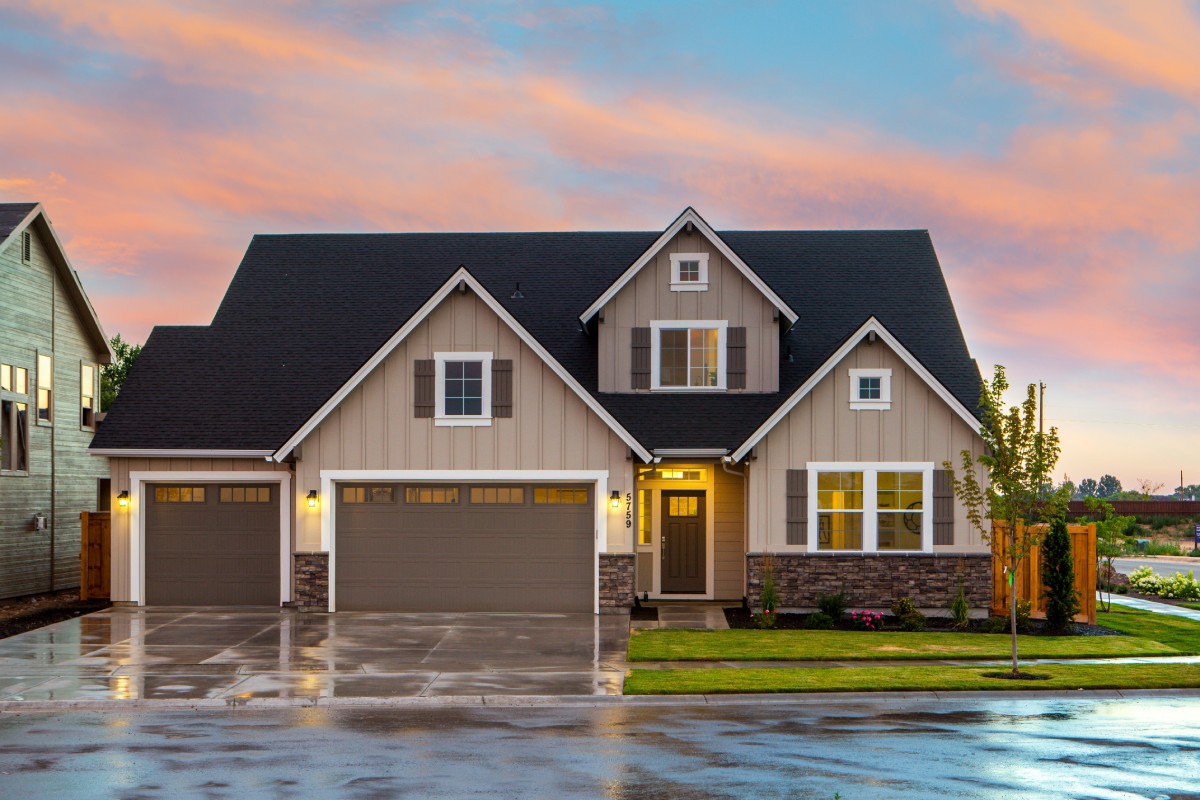
Environmentally friendly car care and maintenance
Taking good care of your car is not just about ensuring longevity and safety but can also lead to eco-friendly outcomes.
Opt for Green Products
Choose biodegradable cleaning products. Traditional car cleaning agents can contain harmful chemicals that run off into our waterways. Using eco-friendly alternatives minimizes this impact.
Proper Disposal of Fluids
Motor oil, antifreeze, and other fluids should never be dumped down drains or onto the ground. Ensure you dispose of them at designated recycling or disposal centers.
Regular Maintenance
A well-maintained vehicle is more efficient and produces fewer emissions. Regularly check your tire pressure, change air filters, and maintain the engine for optimal performance.
Alternative transportation options
The garage is not just for cars. Consider these alternatives that promote cleaner transportation.
Electric Vehicles (EVs)
If possible, make the switch to an electric vehicle. They produce zero emissions at the tailpipe and are more energy efficient. Plus, with renewable energy sources, you can further reduce your carbon footprint.
Biking
Make space for bicycles. Cycling is not only great for your health but also reduces carbon emissions and traffic congestion.
Carpool or Share
If you have multiple vehicles, consider downsizing. Carpooling or joining a car-sharing program can significantly reduce the number of cars on the road and the associated emissions.
Sustainable storage solutions
The garage is often a space for storage. Making it sustainable ensures you’re not only decluttering but also minimizing waste.
Reuse and Repurpose
Before buying new storage containers, see what you have on hand. Old jars, containers, or boxes can be repurposed for storage needs.
Donate or Sell
Before relegating items to the trash, consider if they might be of use to someone else. Donating or selling unwanted items not only reduces waste but also promotes a circular economy.
Modular Shelving
Invest in adjustable and modular shelving systems. They can adapt to your changing needs, reducing the likelihood of discarding them in the future.
Taking steps to green your garage impacts more than just the space itself. It can influence your daily habits, transportation choices, and the way you view waste and storage. Embrace these sustainable practices, and watch as the ripple effect touches other areas of your life, driving you further towards a low impact lifestyle.
Conclusion
Our homes are our sanctuaries, but they also play a pivotal role in the larger ecosystem. Making conscious choices, room by room, can transform our living spaces into hubs of sustainability, benefiting both our immediate environment and the planet at large.

Recap of the room-by-room guide
Throughout this guide, we journeyed through each room, uncovering actionable steps to reduce our carbon footprint and foster a more sustainable lifestyle.
-
The Living Room: We discussed the merits of energy-efficient lighting and delved into sustainable furniture choices.
-
The Kitchen: The heart of the home, where we explored eco-friendly cooking habits, the importance of efficient appliance use, and the magic of composting.
-
The Bedroom & Bathroom: These intimate spaces where personal choices, from the kind of bedding we choose to the personal care products we use, can make a world of difference.
-
The Home Office & Garage: We realized the potential of greening our tech, the impact of our transportation choices, and the benefits of sustainable storage solutions.
-
The Garden & Laundry Room: We were reminded that even outdoors or in the most utility-focused spaces, sustainability can thrive through mindful practices.
Final thoughts on the impact of low impact living
Low impact living is not just a trend; it’s a conscious shift towards responsibility. The choices we make within our homes can create a ripple effect. Reduced energy consumption means fewer greenhouse gas emissions. Less waste means reduced landfill burdens. Sustainable product choices support ethical brands and send a strong message to the market about consumer preferences.
However, the impact doesn’t end at the environmental benefits. Embracing sustainable living often leads to financial savings, whether through reduced utility bills or longevity in products. More than that, it ushers in a sense of well-being, knowing our daily choices align with our values and the world we wish to nurture for future generations.
Encouragement to embrace sustainable changes
Making sustainable choices can sometimes feel overwhelming. However, as this guide has shown, it’s all about incremental changes. Start small. Perhaps, switch to LED bulbs in the living room or commit to composting kitchen scraps. Over time, these small changes snowball, leading to a holistic shift in lifestyle.
Remember, sustainability is not about perfection. It’s about making more informed choices, being aware of our consumption patterns, and striving to do better. The beauty of low impact living is that it’s a journey, not a destination.
Incorporate what you’ve learned in this guide into your daily life, share your knowledge with friends and family, and celebrate each sustainable choice you make. Together, room by room, we can pave the way for a greener, brighter future.

